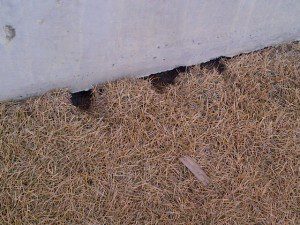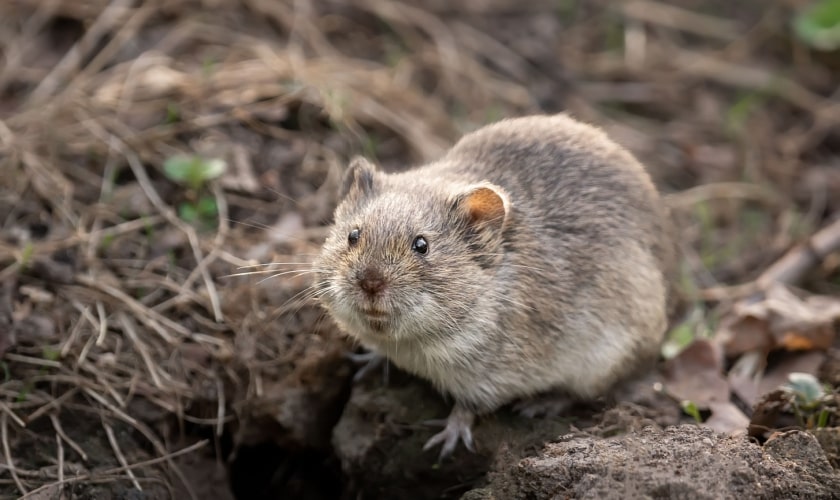Safeguard Your Yard: Proven Vole Control Approaches Unveiled!
Wiki Article
Grasping Vole Pest Control: Comprehensive Insights on Infestation Prevention and Therapy Strategies
By identifying the subtle indications of vole invasion early on, we can take positive measures to prevent widespread damage. In this conversation, we will certainly discover the subtleties of vole behavior, delve into the identification of infestation indicators, and uncover the most efficient prevention and therapy techniques.Recognizing Vole Habits
Taking a look at the foraging patterns of voles offers important understandings into their actions and habitat choices. Voles, tiny rats resembling mice, are herbivores understood for their underground tunneling activities. By observing their foraging habits, researchers can acquire a better understanding of where voles favor to establish their habitats and the level of their ecological influence. Voles are respected dog breeders, with a solitary female with the ability of generating several clutters in a year, making it vital to understand their actions for effective pest control approaches.
Study indicates that voles show selective feeding routines, liking origins, seeds, and bulbs - vole lawn damage. This nutritional preference influences their foraging patterns, leading them to locations rich in plants and ground cover. Furthermore, voles are understood to create intricate passage systems for foraging and nesting purposes, suggesting a high degree of versatility to their surroundings
Recognizing vole actions is necessary for applying targeted pest control steps that disrupt their habitat preferences and foraging activities. By researching their habits, professionals can develop much more effective prevention and treatment methods to manage vole invasions.
Identifying Signs of Vole Problem
Vole infestations can be identified by acknowledging certain indications of their visibility in a location. One of one of the most typical indications of a vole infestation is the visibility of surface area runways. Voles develop networks of slim paths on the ground that are commonly around two inches broad. These runways are often located in verdant locations or under mulch or ground cover where voles can relocate easily and look for food.One more vital indicator of vole problem is the presence of little burrow openings in the ground. Additionally, voles are known to leave behind eaten plant stems, origins, and bulbs near their burrow openings, suggesting their feeding activity in the area.
Furthermore, vole droppings can likewise represent their existence (vole control). Vole droppings are small, brownish, and round fit, looking like grains of rice. Discovering these droppings along paths or near burrow openings can verify a vole infestation. By being vigilant for these indicators, home proprietors can promptly attend to vole infestations and avoid additional damage.
Applying Proactive Avoidance Steps
To properly reduce the risks linked with vole invasions, property proprietors can proactively carry out a variety of preventive steps aimed at guarding their yards and landscapes. Furthermore, keeping yard areas clean and decreasing clutter where voles can conceal or nest is important in lowering their existence.In addition, employing all-natural vole deterrents like castor oil-based repellents or killer urine can act as reliable precautionary measures. It is also recommended to consistently inspect outdoor rooms for any type of indicators of vole activity, such as runways or burrow openings, to attend to possible problems without click for info delay. By embracing these positive avoidance methods, homeowner can substantially reduce the probability of vole damages and maintain the wellness and appearances of their landscapes.
Efficient Treatment Approaches
Incorporating targeted capturing methods and making use of accepted rodenticides are crucial parts of effective therapy methods for managing vole infestations. Capturing can be a reliable means to decrease vole populations, especially when positioned purposefully in their active paths. Snap traps and live catches can both work, with the last permitting the capture and moving of voles. When utilizing rodenticides, it is important to adhere to safety guidelines to stop injury to non-target pets and animals. Location rodenticides in safe bait terminals to decrease threats to unintended targets. Furthermore, environment adjustment, such as reducing ground cover and getting rid of sources of food, can aid discourage voles from infesting an area. Routine monitoring and maintenance are additionally essential facets of effective treatment approaches to ensure that vole populaces are maintained under control. By integrating trapping, rodenticides, environment alteration, and constant surveillance, effective vole bug control can be attained.
Surveillance and Upkeep Tips
Routine surveillance permits for the very early detection of vole activity, enabling timely intervention prior to straight from the source infestations intensify. To efficiently check vole populaces, strategically put traps can be utilized in vole runways or near burrow entryways.Furthermore, keeping a clean and tidy landscape is necessary in vole prevention. Clearing up away particles, such as heaps of timber or dense vegetation, eliminates prospective vole environments. Frequently cutting lawns and trimming vegetation assists minimize vole hiding places and reduces their access to food resources.

Verdict
Finally, understanding vole insect control calls for a solid understanding of vole habits, the ability to determine indicators of infestation, applying positive prevention measures, effective treatment methods, and consistent surveillance and maintenance. By taking a detailed approach to vole control, individuals can successfully manage and prevent problems, eventually protecting their home and bordering atmosphere from damages created by these little rats.In this conversation, we will certainly discover the subtleties of vole behavior, delve right into the identification of infestation indicators, and discover the most reliable prevention and treatment techniques.Integrating targeted capturing techniques and using accepted rodenticides are essential elements of effective therapy techniques for taking care of vole invasions. To properly monitor vole populations, purposefully placed traps can be utilized in vole paths or near burrow entryways. Evaluating and Recommended Reading fixing any type of damages to these frameworks makes certain that vole control stays effective in protecting properties from invasions. By incorporating these surveillance and maintenance methods right into a comprehensive vole parasite control strategy, people can efficiently manage vole populations and secure their homes from damages.
Report this wiki page